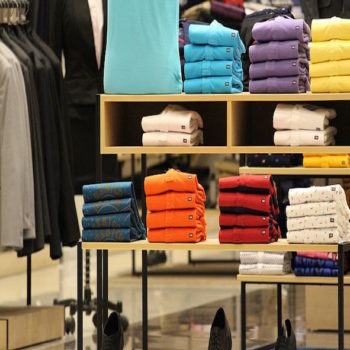AI, Hyper-Personalisation, Automation & More: the Big Retail Trends of 2018
by Hugh Williams on 23rd Feb 2018 in News

Having well and truly settled in to 2018, many retailers are in the midst of defining their latest business objectives, as well as how they plan to continue improving across all areas of their business, writes David Buckingham, CEO, Ecrebo (pictured below). However, this is not always so clear-cut, particularly when considering customer experience and loyalty — two areas that are proving to be crucial when it comes to defining the success of those in the industry.
The dominance of e-commerce retailers continues to pose a threat to those on the high street. With online shoppers spending £1.4 billion online during Black Friday last year — a 12% increase when compared to Black Friday in 2016 — physical retailers are now relying on innovations within the in-store customer experience to encourage people into their retail outlets.
In-store customer loyalty is intrinsically linked to the in-store customer experience, and the sophistication of loyalty schemes adopted by retailers has evolved significantly in recent times. It’s proven to be an effective method of driving customer engagement and sales, and we will see a number of new trends emerge throughout this year.

David Buckingham, CEO, Ecrebo
The right data, the right approach
Data and analytics have been playing a pivotal role in retail and loyalty for years now, and there is nothing to suggest this will not continue into the future. Effective loyalty schemes rely heavily on data, and the success of these schemes depends upon both the quality of the data and how it’s being used. Indeed, recent research from Retail Week found that 61% of retailers agree that good quality data can improve loyalty and retention rates.
With this focus on personalisation, what does it actually mean for retailers going forward? With the compliance deadline for GDPR fast approaching, 2018 will see a change in attitude from retailers. While many are no doubt doing this already and following best practices when it comes to data collection and consent, there needs to be an added level of consumer education in terms of where and how their data is used. Consumers are willing to share their details with retailers — if they get something of value in return — and they need to be encouraged to do so. On top of this, they need to feel confident that retailers will use this information responsibly, in order to deliver benefits back to them.
Taking that a step further, the same research revealed that 44% of a brand’s customer data is gathered at the till. This presents a mostly untapped channel of opportunity for retailers. How so? By utilising data that is gathered at the point of sale, retailers can deliver offers that are far more relevant to the shoppers that they really wish to communicate with, in a meaningful way. This goes one step beyond simple ‘money off’ offers — customers can expect to enjoy unique messages at the point of sale which could include useful information about the product they have just purchased.
Hyper-personalisation or automation?
Hyper-personalisation is here to stay; there’s little argument here because it just makes sense. Giving your loyal customers rewards they actually find valuable and an experience they enjoy, all based on relevance, seems like a smart strategy. However, there’s a slight contradiction because as the desire for and delivery of personalisation increases, more and more automation will play a role. Can the two work together?
Put simply, the answer is yes. We might currently perceive automation to be more useful within the e-commerce environment, perhaps for setting up chat bots that can help online shoppers find what they’re looking for, or for delivering targeted advertising to certain customers. But striking the right balance between automation and personalisation can undoubtedly have a positive impact on in-store customer behaviour.
Just think about the effect that self-help kiosks, mobile points of sale, and mobile store assistants using smartphones and tablets can have on overall customer experience and loyalty, while still providing personalisation. 2018 will be about finding a balance between personalisation and automation.
Artificial intelligence or augmented intelligence?
According to Forbes, we should worry less about AI and more about augmented intelligence. Yes, AI has a contribution to make to retail; especially as Forrester predicts that 10% of purchase decisions will be influenced by agents (such as chat bots) and the platforms they reside on because of the wealth of information they are likely to gather from shoppers and use it to guide decision-making. However, we should not be relying solely upon AI to deliver these benefits. When it comes to automation and personalisation, there needs to be a considered combination of both AI sophistication and human logic if retailers are to notice a significant difference.
Customers in today’s retail landscape require a perfect recipe of customer experience, loyalty rewards and products that are genuinely relevant to them, and these trends go a long way to helping retailers get this right. If loyalty and the customer experience are approached and tackled in the right way, it will be a long time before the high street is truly at risk.
AIIn-storePersonalisationTechnology








Follow ExchangeWire